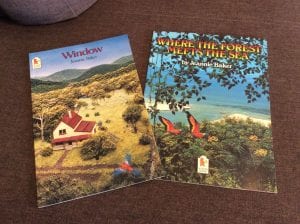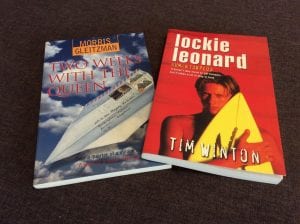ETL402 Assessment Item 2: Part B – Reflection
My early blog and discussion posts in ETL402 demonstrated a superficial understanding of how children’s literature could be used in classrooms and the school library. I made some vague suggestions for how my favourite picture book for older readers, Hello Lighthouse, could connect to geography or history (Murphy, 2020, March 15). I linked two Aboriginal and Torres Strait Islander books to the Australian Curriculum (Murphy, 2020, March 22), and analysed the postmodern devices used in Shaun Tan’s Rules of Summer (Murphy, 2020, March 15).
But I never truly grasped the potential of this literature until I revisited a reading from Module One about the enormous body of research behind the power of stories.
We rely on stories like we rely on air, water, sleep, and food.” (Haven, 2007, p. 4)
I began to explore the earlier chapters of Haven’s book (2007), and after my initial confusion when putting together the first assessment (Murphy, 2020, March 31), started to see the broader benefits of children’s literature, above and beyond the improvement of reading and writing skills. Literary learning, for me, became all about harnessing the incredible potential of all types of stories to hit every part of the curriculum. It became about learning with and through books, learning about ourselves and others, about our emotions, and making sense of our world (Haven, 2007; Ross Johnston, 2017, p. 80).
In my current role as Library SSO, I am learning to apply my growing knowledge of children’s literature from Module Two and Three. For example, I made two successful book recommendations (Murphy, 2020, May 14) using what I know about children’s developmental stages and finding ‘goodness-of-fit’ (Travers & Travers, 2008). On a third noteworthy occasion, I took on McGill-Franzen and Ward’s advice (2018, p. 154), recommending a series fiction title to a middle-primary teacher for her class novel (Murphy, 2020, March 28). We ended up choosing The Magic Finger instead, something her class had never seen before. Since then, a number of her students have come to the library asking me where they can find the Roald Dahl books! This certainly demonstrates that providing exposure to a rich variety of literature is important (McDonald, 2013, p. 8). Choosing from series fiction, or the individual works of a popular author, is only scratching the surface!
I moved into Module Six questioning how we could put literary learning into practice in a more structured and accessible way, unlike my vague suggestions early in the subject. Literature Circles caught my attention as they featured as a research method in many of the articles about graphic novels I had been reading in my other topic, EER500 Introduction to Educational Research. I chose to explore Literature Circles in depth and wrote a discussion post that built the foundation for my work in the third section of Part A of this assessment, Literature Circles in History (Murphy, 2020, May 14).
Moving forward, with literary knowledge and skills under my belt, I feel confident enough to encourage teachers to use children’s literature more often in classrooms, and justify why it is important. I am excited by the prospect of children’s literature in the digital environment, and the incredible potential of book apps, transmedia storytelling, and multimodal learning experiences. Most of all, I am simply looking forward to reading more kids’ books.
Bibliography (APA 7th)
Blackall, S. (2018). Hello lighthouse. Hachette Australia
Dahl, R. (2016). The magic finger. Penguin Random House
Tan, S. (2013). Rules of summer. Hachette Australia
References (APA 7th)
Haven, K. F. (2007). Story proof: The science behind the startling power of story. Greenwood Publishing Group.
McDonald, L. (2013). A literature companion for teachers. Primary English Teaching Association.
McGill-Franzen, A., & Ward, N. (2018). To develop proficiency and engagement, give series books to novice readers. In D. Wooten, B. Cullinan, L. Liang & R. Allington (Eds.). Children’s literature in the reading program: Engaging young readers in the 21st century, (5th ed., pp. 153-168). Retrieved from ProQuest Ebook Central.
Ross Johnston, R. (2017). Australian literature for young people. Oxford University Press.
Travers, B. E., & Travers, J. F. (2008). Children’s literature: A developmental perspective. John Wiley & Sons.

